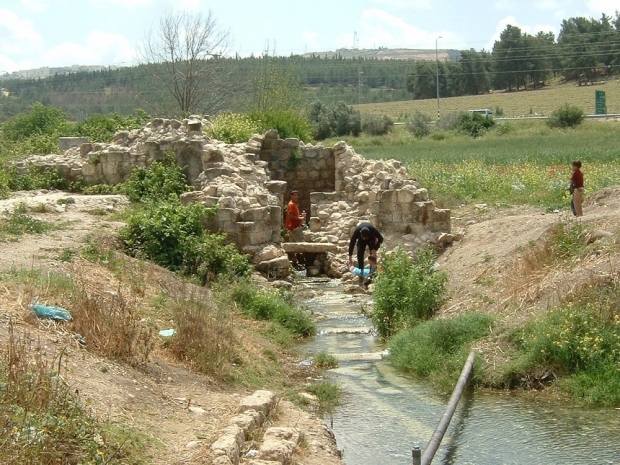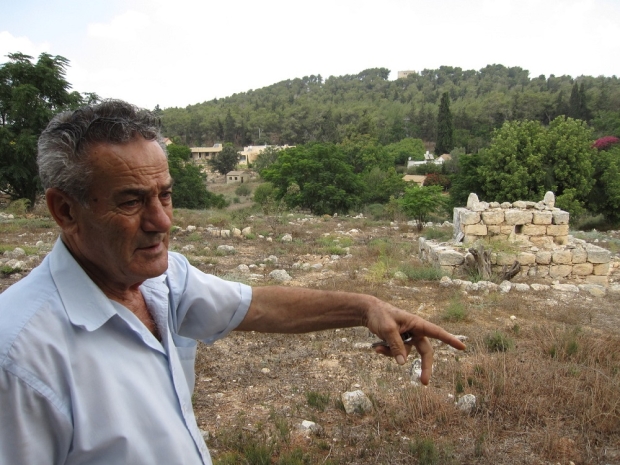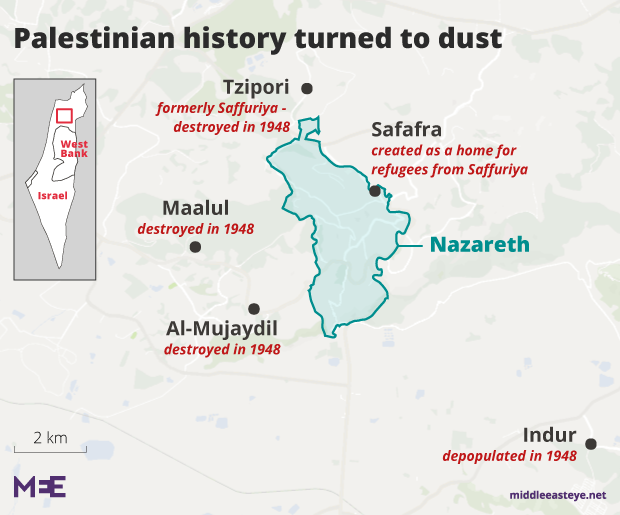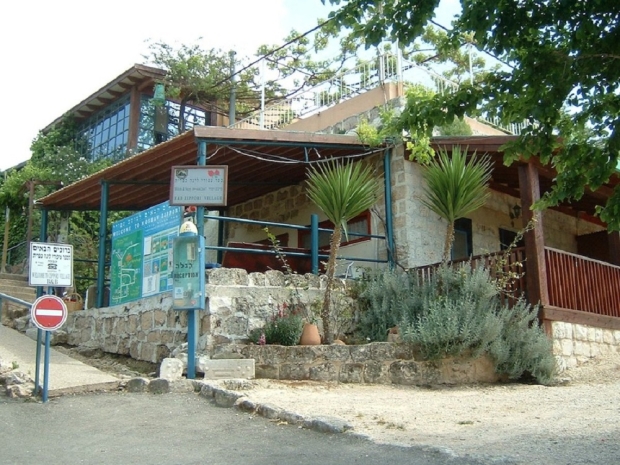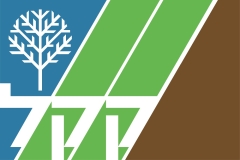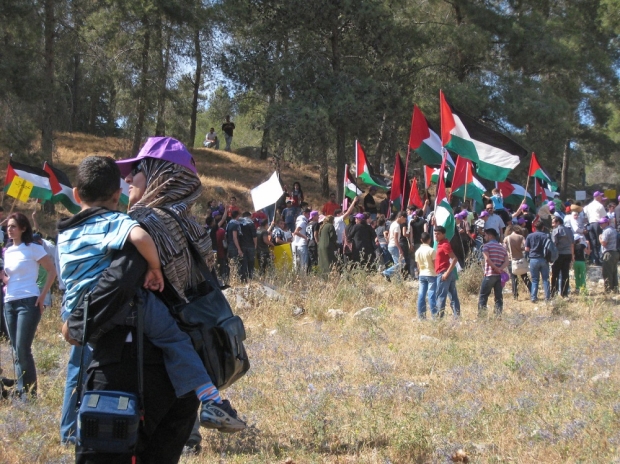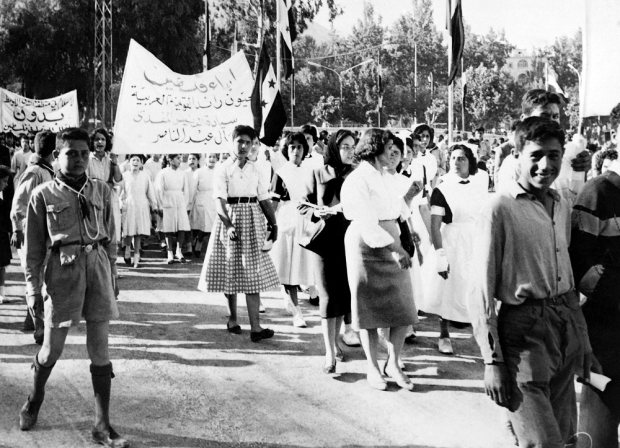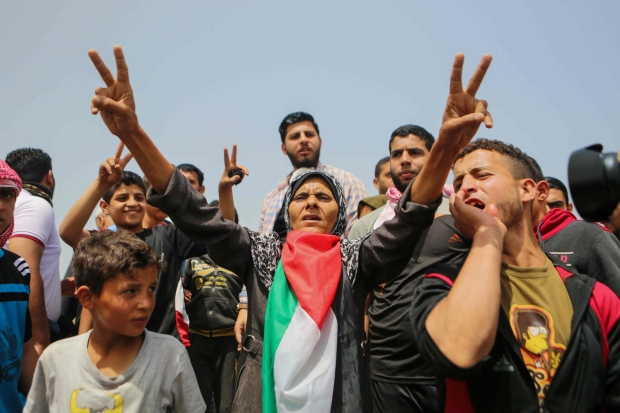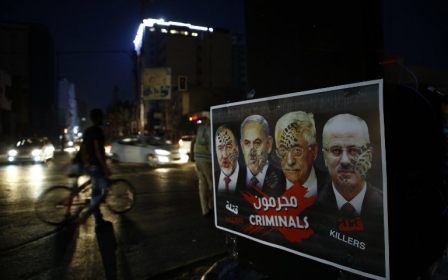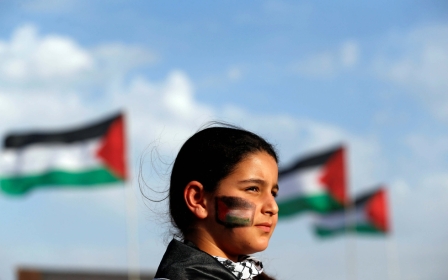'A place I do not recognise': Palestinians mark 70 years of Israeli injustice

TZIPORI, Israel - The Israeli farming community of Tzipori is littered with clues – at least, for those prepared to look – to a way of life extinguished seven decades ago.
Close by sheep pens and behind a mass of prickly-pear cactuses are to be found crumbling tombs and stones tracing out graves. On the other side of the valley, the floor of a pine forest is strewn with rubble, all that is now left of hundreds of homes that were razed.
And at the entrance to Tzipori is an old stone wall surrounding a small spring, where plentiful water gushes forth after winter rains.
The Nakba of 1948
One million Palestinians forced from their homes
500 villages either destroyed or depopulated
5.9 million Palestinian refugees as of 2017
150,000 Palestinians who remained after 1948
These are the remains of Saffuriya, a Palestinian village that existed for hundreds of years close to the city of Nazareth in the Lower Galilee – until its destruction in 1948.
Saffuriya was one of more than 500 Palestinian villages levelled by the Israeli army in events known in Arabic as the Nakba, or Catastrophe. Some 750,000 Palestinians were forced into exile, dispossessed of their homeland, as a self-professed Jewish state was built over the ruins.
This week, in accordance with the Hebrew calendar, Israel officially celebrates the 70th anniversary of the state's founding – nearly a month before Palestinians commemorate the Nakba on 15 May.
But a significant section of Israel's population will be in sombre mood on 19 April. It will not be their independence day.
One in five citizens of Israel is Palestinian, descendants of those who managed to avoid expulsion from the new state of Israel in 1948 as it was established on 78 percent of historic Palestine.
Today, they number some 1.7 million.
Expulsion operations
Most discussions about Palestinian refugees focus on the millions in camps across the Middle East – in Lebanon, Syria, Jordan and in the Israeli-occupied territories of the West Bank and Gaza. Usually overlooked are the several hundred thousand Palestinians still living in Israel who were internally displaced by the Nakba.
Significant numbers of Saffuriya's population evaded Israeli soldiers in 1948 and hid in Nazareth and other locations spared the expulsion operations, noted Ilan Pappe, an Israeli historian and author of The Ethnic Cleansing of Palestine, a study of the Nakba.
They were forced to suffer a second indignity – watching their beloved village disappear only to be reinvented as a Jewish moshav
- Ilan Pappe, historian
When it became clear they would not be allowed home, Saffuriya's refugees slowly re-established their lives on the outskirts of Nazareth, in a new neighbourhood they called Safafra, named after their former village and on a hillside overlooking it.
"They were forced to suffer a second indignity – watching their beloved village disappear only to be reinvented as a Jewish moshav [the agricultural community of Tzipori]," Pappe told Middle East Eye.
Almost overnight, the influx of refugees from Saffuriya and other destroyed villages doubled Nazareth's population.
The refugees were only spared further expulsion when the Israeli commander who attacked Nazareth failed to drive out the inhabitants.
'Present and absent'
Israel keeps no public records, but it is widely believed that nearly a quarter of Israel's Palestinian minority are internal refugees or descended from them.
Israeli law even provides them with a special, Orwellian designation as "present absentees" – present in Israel, but absent from their villages.
These Palestinians find themselves in a similar position to refugees outside Israel.
They have been stripped of any right – even as Israeli citizens – to reclaim their property or return to their lands.
I can see Saffuriya from my home, and there is not a day I don't think about what it meant to us
- Abu Arab, Suffuriya refugee
Ameen Muhammad Ali was 13 in July 1948, when Israeli forces attacked Saffuriya and expelled its more than 5,000 people.
"Anything we could not take with us was seized by Israel," he told MEE. "We had to begin our lives again from scratch."
Today, the 83-year-old, better known as Abu Arab, owns a small shop in Nazareth's old city market, but still considers Saffuriya his true home.
"I can see Saffuriya from my home in Nazareth, and there is not a day I don't think about it and what it meant to us. I have watched it change before my eyes into a place I cannot recognise."
March of Return
As they have done on every Israeli independence day for three decades, the Palestinian internal refugees will commemorate their Nakba with a March of Return to one of the destroyed villages.
This week tens of thousands are expected to walk in procession to a site on the coast south of Haifa where a series of Palestinian villages were razed by the Israeli army in 1948 as part of operations to prevent the refugees' return. The marchers will congregate near Atlit, today a small Jewish town.
Abu Arab, one of the founders of "Adrid" – the Association for the Rights of the Internally Displaced, the main body representing the internal refugees – said the March of Return had played a vital role in raising awareness among the younger generations of what had taken place during the Nakba.
Ziad Awaisi, a 43-year-old physiotherapist whose grandparents were expelled from Saffuriya and who was raised in Nazareth, is one of the organisers.
He told MEE: "The annual march is now by far the largest event in the calendar of Palestinians inside Israel."
We march on behalf of all the refugees, to represent them because they are denied the right to attend
- Ziad Awaisi, descendent of Saffuriya family
Over the years it has gained a huge symbolism for Palestinians across the Middle East, most of whom are barred from entering Israel.
Significantly, the same name – the March of Return – was adopted by Palestinians in Gaza for their recent weeks of protests at the perimeter fence. Israel has responded with sniper fire that has so far killed tens of demonstrators and wounded many hundreds.
"Our march to the destroyed villages is closely followed by all Palestinians but especially by the refugees in the camps," said Awaisi. "It shows them that they are not forgotten and that we continue to stand with them."
Organisers seek out refugees from the destroyed village at the centre of each march – often those in camps in the region – to relay a video message to the marchers.
"It is a heavy responsibility for those of us inside '48," added Awaisi - a reference to the parts of historic Palestine that became Israel in 1948.
"We march on behalf of all the refugees, to represent them because they are denied the right to attend."
Police violence
On Israel's 60th independence day a decade ago, the Nakba march was staged close to Saffuriya. It was chosen in part because Saffuriyans are among the largest refugee population inside Israel.
However, the event ended in unexpected violence when riot police confronted the marchers as they emerged from a forest glade where they had been listening to speeches from community leaders.
Police fired tear gas and stun grenades at crowds that included young families. Police on horseback, flailing batons, charged at the marchers, with dozens injured, including two Palestinian members of the Israeli parliament.
It marked a sea-change in Israel's attitude towards the Nakba march.
Awaisi, who was among those caught up in the police attack, said the Israeli authorities had been surprised by the large turnout that year and hoped a violent response would discourage future marches.
"They understand that the march is a national event that unites us as a community to demand our rights. That frightens them and is the reason why they have been putting more restrictions on the march each year."
Pappe, who now teaches at Exeter University, said most Israelis viewed the march not as a protest in defence of the refugees' rights, but as proof of growing Palestinian extremism.
"The march discomforts Israelis because it reminds them that the Palestinian minority's demands are connected to what happened in 1948," he told MEE.
"The event is seen as provocative and subversive. In fact, since 2000 and the outbreak of the second intifada, Israeli governments have regarded any assertion of Palestinian nationalism as an act of terror against the state."
Nakba Law
In 2011, in a sign of the mounting mood of intolerance, the government of Benjamin Netanyahu passed the Nakba Law. It deprives Israeli public institutions, including schools, universities and libraries, of funding should they mark the Nakba.
But in practice the law's effect has backfired, with greater attention on the Nakba than ever before. Recent marches have been among the largest in the event's history, and have increasingly attracted a younger generation of Israel's Palestinian citizens.
The young are now the backbone of the march. The event broadcasts a unity that is lacking in other areas of Palestinian life
- Ilan Pappe, historian
Awaisi said various factors explained the march's growing popularity. In part, it was a backlash against the Nakba Law; social media had made it easier to raise awareness of the event, and a new generation – less traumatised by the Nakba – were readier to confront the authorities.
And, he added, young people saw commemoration of the Nakba as a way to break through Israel's divide-and-rule policies that had fragmented Palestinians into territorial enclaves.
The Nakba, he said, was a unifying trauma that reconnected Palestinians in Israel to those in the rest of historic Palestine and to the refugees living in exile.
Pappe concurred. "The young are now the backbone of the march. It is a mass protest against the ongoing catastrophe faced by Palestinians. The event broadcasts a unity that is lacking in other areas of Palestinian life."
No return to villages
Despite their Israeli citizenship, human rights activists note, the internal refugees have been blocked by a series of legal and administrative measures from accessing their former lands.
Suhad Bishara, a lawyer with Adalah, a legal centre for Palestinians in Israel, said Saffuriya and other destroyed villages had been effectively turned into no-go zones for Palestinian citizens through two early pieces of legislation: the 1950 Absentee Property Law and the Land Acquisitions Law of 1953.
The first denied Palestinians a right to their home and property if they had been absent from their village for a single night during the many months of fighting in 1948. The second authorised a mass land grab, of some 120,000 hectares, from Palestinian citizens, most of them internal refugees.
"Under the Absentee Property Law, the refugees were not allowed back to their homes or entitled to compensation, even though they were [Israeli] citizens," she told MEE.
The state's position has been upheld by the Israeli courts in test cases relating to the villages of Biram and Iqrit.
These two Palestinian communities in the Upper Galilee were razed after the Israeli army evacuated the residents in 1948, even though they were issued with written promises that they would be allowed back.
Legal appeals ended in 2003 when the Supreme Court supported the government's arguments rejecting the villagers' rights.
Pappe said the court was extremely worried about offering any legal support to internal refugees. "It fears opening a Pandora's box, worried that other villages could use such a ruling as a precedent for a right of return."
Bishara added: "What the court decided was that the refugees' nationality [as Palestinians] determined their status, not their Israeli citizenship. The court thereby agreed to suspend the refugees' constitutional rights as citizens."
Custodian sold property
Instead, the lands and property of villages like Saffuriya were transferred into the temporary guardianship of an Israeli official known as the custodian of absentee property.
The custodian's responsibility, said Bishara, "is to safeguard the property until the situation of the refugees is resolved in accordance with international law."
But in correspondence with Adalah, Bishara noted, Israeli officials have claimed that the refugees permanently lost any right to their properties. Most of their lands were sold off to a Development Authority in the 1950s.
"In our view, even when the properties are sold, the income from the sales continued to reside with the absentees, not with Israel," Bishara said.
On the lands of many of the destroyed villages, new Jewish communities were established to prevent any return by the refugees.
Saffuriya's extensive lands, for example, were settled from 1949 onwards by East European Jews, and the site renamed Tzipori. Today, about 300 Jewish families live there.
According to analysts, Israel set about implementing a two-stage process after the Nakba: it concealed evidence of a historic Palestinian presence to legitimise the land theft, while enforcing a strict system of residential segregation in Israel to ensure no Palestinian citizens could regain a foothold in their former lands.
Pappe has termed the first stage "memoricide".
An international Zionist organisation, the Jewish National Fund, was responsible for planting European-style pine forests over the ruins of Palestinian villages such as Saffuriya.
As well as disguising the land's provenance, the forests created an instant physical impediment designed to prevent the refugees from rebuilding their villages.
Pappe noted a famous saying about the Palestinian refugees usually attributed to Israel's founding father, David Ben Gurion: "The old will die, and the young will forget."
"Israel actively sought to engineer such forgetting, and the pine forests were intended to assist in erasing those memories," he said.
"Paradoxically, today the forests have become the most obvious signposts to help young Palestinians in Israel identify where the villages were buried."
In Tzipori, the forest planted over the refugees' homes is named in commemoration of Guatemala's independence in 1821. It hints too at the Israelis' murky historic dealings with Guatemala's military governments.
Other forests close by honour Winston Churchill, Britain's war-time prime minister; Lord Balfour, author of the Balfour Declaration that promised the Zionists a homeland in Palestine; and Coretta Scott King, the widow of US civil rights leader Martin Luther King.
Still more have been named after countries such as South Africa and Canada, whose populations donated funds to buy trees.
Pappe observed: "This was a way for Israel to connect the forests to foreign states and provide an international legitimacy to these acts of ethnic cleansing and memoricide."
Vetting committees
But even with the villages destroyed and forests planted over them, Israeli officials were fearful that Palestinian citizens, especially the internal refugees, might seek to gain access to the hundreds of rural Jewish communities built on their former lands.
Officials, therefore, established admissions committees to vet applicants to communities like the kibbutz and moshav that controlled most of Israel's new territory.
For decades these committees have ensured that such communities remained exclusively Jewish. For most of that time, Palestinian citizens were simply rejected out of hand based on their ethnicity, said Bishara.
For the first time, there will be an explicit legal basis for racist discrimination
- Suhad Bishara, a lawyer with Adalah, on the Basic Law
Faced with legal challenges to this policy through the 2000s, the Netanyahu government passed the Admissions Committee Law in 2011. It entitles more than 400 rural communities like Tzipori to bar Palestinian citizens on the grounds that they are "socially or culturally unsuitable".
A government draft of a new Basic Law currently before the parliament that defines Israel as the nation-state of the Jewish people will expressly allow segregation based on national or religious criteria. Israel's liberal Haaretz newspaper recently warned that the measure would ensure rural communities remained "clean of Arabs".
Bishara said: "For the first time, there will be an explicit legal basis for racist discrimination, one that denies outright even a theoretical principle of equality."
Regret but no guilt
Guy Kruger, a 32-year-old peace activist who lives in Tzipori, told MEE that he was "saddened that the life that used to be here has gone". But he added: "While I regret what happened [in 1948], it had to be done. It was a necessity for the Jewish people. I feel regret but not guilt."
Kruger, whose family moved from South Africa, said the Jewish residents of Tzipori were polarised about the issue of having contact with the refugees living close by in Nazareth.
Neighbours and friends commonly express the view that the Arabs... ran away rather than that we chased them away
- Guy Kruger, Tzipori peace activist
"A small number are liberal and open to the idea of dialogue. But the majority is indifferent and have no interest in the refugees," he said.
Kruger's family home and their sheep pens are a short distance from the ruins of Saffuriya's cemetery. As a child he remembers the site but said he never thought about its significance.
"Neighbours and friends commonly express the view that the Arabs attacked us first, that they fled on the orders of their leaders, or that they ran away rather than that we chased them away."
Researchers such as Pappe have disproved such claims, but they persist among the vast majority of Israeli Jews.
Bombed at sunset
Abu Arab recalled that Israeli warplanes dropped bombs on Saffuriya's homes in July 1948, just as the families sat down to break the Ramadan fast. At dawn the next day, Israeli soldiers arrived to carry out expulsions.
Like others, Abu Arab's family fled northwards, towards Lebanon. The eldest of his three siblings, the late Taha Muhammad Ali, would later become a renowned Palestinian poet, often writing of the Nakba and Saffuriya.
Shortly after the family reached Lebanon, Abu Arab's young sister died, probably of heat exhaustion. "My mother was heartbroken," he said. "She would sit by the grave every day, consumed with grief."
Months later, when it became clear Israel had no intention of allowing the refugees back, defining returnees as "infiltrators" and allowing soldiers to shoot them on sight, the family decided to risk the perilous journey to Saffuriya.
There they discovered the village gone, their former homes declared a closed military area.
"We had lost everything. Our home, our farmland, our belongings had all been taken by the Israeli government," he said.
He and his brothers gradually rebuilt their lives in Nazareth, at first selling cakes from a trolley and later saving enough for each to buy a shop. Abu Arab today sells artefacts from Palestine's past, including sheepskin rugs, battered copper cauldrons and British Mandate coins.
He has also created a museum in Safafra to help the younger generation understand a way of life that has all but disappeared since the destruction of villages like Saffuriya.
A shared community?
Abu Arab believes the refugees will one day return to their villages, and that they can live in peace alongside the Israeli Jews who took their lands. But Kruger is less sure that such residential intimacy is possible in the current political climate.
"I'd be delighted myself to live in a shared community. But I'm in a small minority," he said.
"The problem for most residents is that they want to feel at home in Tzipori and they think Jews and Arabs are too different. They don't want someone strange, someone different, among them."
Zionism is an outdated ideology, one that will prevent any meaningful peace as long as it is in place
- Abu Arab, Saffuriya refugee
He pointed out that there were already heated disputes between Jewish families in Tzipori, especially between the veteran farming families and the newcomers who mostly work in offices in nearby cities and prefer a suburban lifestyle.
"Bring Arabs into that mix and it would a recipe for an explosion," he said.
Abu Arab said it was time for an end to the kind of mentality that had allowed Israeli Jews to claim the land was largely empty of inhabitants until Jews settled Palestine.
"Zionism is an outdated ideology, one that will prevent any meaningful peace as long as it is in place," he said. "It's time for new thinking."
This article is available in French on Middle East Eye French edition.
Middle East Eye propose une couverture et une analyse indépendantes et incomparables du Moyen-Orient, de l’Afrique du Nord et d’autres régions du monde. Pour en savoir plus sur la reprise de ce contenu et les frais qui s’appliquent, veuillez remplir ce formulaire [en anglais]. Pour en savoir plus sur MEE, cliquez ici [en anglais].


